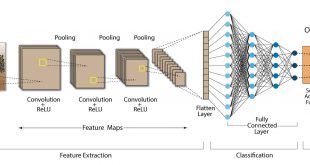Fen Bilimleri Enstitüsü, Geomatik Mühendisliği Programı, İTÜ
Estimation Emission From Crop Residue Burning Based On Crop Type Using Remote Sensing Data: A Case Study From Gap Region
Kübra Bahşi; Elif Sertel, 2020
Abstract: Agricultural production has been providing an essential resource for the economies of many countries. Countries examine agricultural practices in detail and provide annual evaluation reports to create sustainable agricultural policies Each year, harmful agricultural activities are handled by various committees, and targets are set to correct them. One of the main problems reported in Turkey is the crop residue burning (CRB). It can be defined as the incineration of agricultural wastes in the land after the harvest season. It is preferred by the farmers because it is considered to be more advantageous economically, more time efficient, and it increases the yield in the soil. Contrary to popular belief, CRB application has harmful effects on nature, land, human health, and especially air quality. It increases the release of greenhouse gases and particulate matter into the atmosphere that will cause global warming and air pollution. Consequently, many clean air policies are directed towards reducing emissions from agricultural sources. For strategies to be adequate and sustainable, reliable information about the effects and levels of applications such as CRB on air quality should be obtained. In this sense, remote sensing provides researchers with high spatial and temporal resolution open source data that will provide input to such projects, while also offering practical methods. Unlike other countries, in Turkey, the number of studies examining the effects of CRB on human health and air quality with remote sensing data and methods are not enough. Therefore, in this study, crop type based emission estimation was made with remote sensing data and methods. The study area is chosen as the Southeastern Anatolia Region (GAP region), which consists of 9 provinces, located in the south-east of Turkey. Firstly, a burned area and phenology based product type maps were created on the Google Earth Engine (GEE) platform with Sentinel-2A satellite images. Then both were overlapped, and emission calculations by IPCC standards were made. Finally, product type-based emission estimation results were supported by Sentinel-5P meteorological satellite data. As a result of the applications, 506352.21 ha medium-high level and 8053.15 ha high-level burned area were determined. Also, it was identified that 14444,307 Gg greenhouse gas and 117,809 Gg Pm were released due to CRB in 2019. All results were analyzed based on province and crop type, and evaluations regarding methods and data were presented.
Tez No: 637632
 CSCRS İTÜ – Center for Satellite Communications and Remote Sensing
CSCRS İTÜ – Center for Satellite Communications and Remote Sensing 